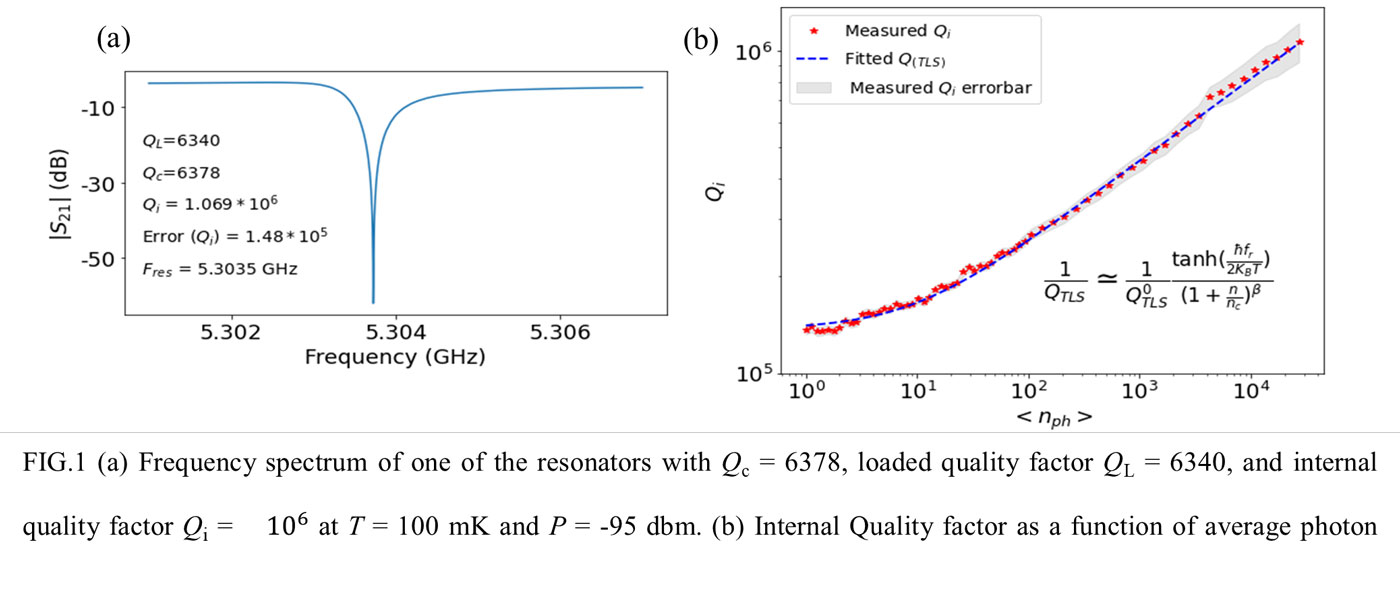ED6-4
Nitride-based superconducting coplanar waveguide resonator with an internal quality factor above one million
Nov. 30 19:20-19:35
*Paniz Foshat1, Paul Baity1, Sergey Danilin1, Valentino Safari1, Shima Poorgholam-khanjari1, Mingqi Zhang1, Oleg A. Mukhanov2, Matthew Hutchings2, Robert Hadfield1, Muhammad Imran1, Martin Weides1, Kaveh Delfanazari1
University of Glasgow (United Kingdom)1
SeeQc (United Kingdom)2
As a type II superconductor, niobium nitride (NbN) has been widely used in quantum circuits [1-2]. Insensitivity to magnetic fields and high kinetic inductance make it a suitable material candidate for applications in complex superconducting quantum circuits. However, NbN is more susceptible to decoherence sources such as two-level system (TLS) defects, and optimising the fabrication procedure is one of the main challenges which should be overcome. Here, we investigate microwave photonic losses in NbN-based superconducting quantum circuits. Our circuits consist of an array of microwave resonators made from a 100 nm thin NbN film, capacitively coupled to a common coplanar waveguide. We designed, modelled, and optimised the resonators on various substrates such as Sapphire and intrinsic Silicon (Si) through analytical calculations and numerical simulations. We microfabricated the NbN resonators on Si and performed the microwave measurements at cryogenic temperatures down to T = 80 mK. We study the internal quality factor (Qi) of fabricated microwave resonators in millikelvin temperature in the power range of-140 dBm to -95 dBm. We further show an agreement between numerical calculation and measured internal quality factor at T = 100 mK.
We report results for one of our samples, which includes three resonators, each with 4 µm widths and 2 µm gap, coupled to a feed line, all formed on a 525 µm thick Si substrate. The Si substrate was cleaned with HF solution to remove any native oxide before sputtering NbN. The resonators are fabricated using standard e-beam lithography and CF4 anisotropic dry etch. The resonator length was chosen to have a fundamental frequency mode between 3-6 GHz (see Fig.1 a, for results for one resonator). We observed that at low temperature (T = 100 mK), the internal quality factor increases from Qi = 1.4×105 ±4.7×104in the single photon regime to Qi = 106±1.4×105at high powers (Fig.1.b). We further found an agreement between the estimated TLS losses and our experimental results [2].
[1] Carter, Faustin W., et al Applied Physics Letters 115.9 (2019): 092602.
[2] Probst, Sebastian, et al. Review of Scientific Instruments 86.2 (2015): 024706.
Keywords: Superconducting resonator , Two level system (TLS) loss
